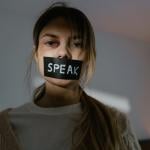
Tsz Mat Pun,
Fufai Pun,
and
Ng Thang Kheong:
Three names you might not have heard. I want you to know them.
Arthur Martunovich, an Estonian immigrant, entered into the Seaport Buffet in New York and killed them with a hammer. Martunovich claimed that he was prompted to kill Chinese men after watching a film(s) that showed mistreatment of Chinese women by Chinese men.
Ng Thang Kheong, who was Malaysian and owner of the restaurant, came to work in the United States about twenty years ago with his wife.
Tsz Mat Pun, manager and part owner, and chef Fufai Pun were uncle and nephew. Fufai, approaching mid-thirties, had worked at the restaurant since his teens.
These men were reduced to objects and were not seen as human. Two racist and sexist ideas converge in this violent hate crime: toxic White masculinity and the model minority stereotype.
In this post, I examine how racist and sexist narratives work to the detriment of different people of Asian descent. I discuss the issue of addressing domestic violence without reinforcing racist hetero-patriarchal norms.
Toxic White Masculinity
The violent hate crime committed by Martunovich involved his attempt to be a savior of Chinese women, to combat patriarchal violence in the Chinese community. This behavior points back to centuries of toxic masculinity exhibited by White men in their fury to defend and avenge women they hold as the pinnacle of womanhood.
The efforts were far from noble. A superficial exploration of these behaviors reveals a long trail of White racial and gender paranoia leading to untimely deaths of innocent Black men.
Model Minority Stereotypes
Asians and Asian-Americans often receive praise within the United States, by those who adhere to unchecked racist beliefs for being the model minority. That is, upon examining the racial hierarchy* within the United States, certain Asian and Asian-descendent groups occupy a place of higher status than others and People of Color.
The biological determinism that was used to justify slavery still rears its ugly head in limiting beliefs such as Asian people as “inherently” studious and “naturally” skilled in math and sciences.
The Convergence of Toxic White Masculinity and Model Minority Stereotype
The model minority stereotype has fed into racist and sexist stereotypes, that place Asian women as the ultimate model of femininity. The notion that feminism has turned White women into “men” in their outspokenness, Asian women have dethroned some “White women” in the imaginations of White men who cling to these disturbing beliefs..
These men prop up Asian women in a sexist model minority stereotype, with the ideas that all Asian women are quiet, docile, and subservient to men to the point of worshipping them.
Heterosexual men who feel insecure in their own gender identity seem to heavily rely on sexist and racist stereotypes in the racial hierarchy, especially in romantic relationships.
These individuals perceive a need to feel like a savior or hero to feel like a “man.”
Kristina Wong’s I Give Up on Trying To Explain Why The Fetishization Of Asian Women Is Bad provides a witty, sharp, and much needed critique.
Consequently, the toxic masculine idea of protecting White feminine virtue from the Native American and Black men has expanded to protecting Asian women, the new ideal feminine woman, from Asian men.
What we see is an expanding of racist and sexist ideas undergirding toxic White masculinity that includes both White and Asian femininity.
Domestic Violence Against Women and Toxic Masculinity
Toxic masculinity is not something reserved for White men. Within a racist society, certain White feminists incline to leave race out of their analysis of sexism. Therefore, if we are going to address sexist patterns and trends, it is ever important to look at other intersections, albeit, sexual orientation, religion, class, race, and other constructs.
I do not want to overromanticize any community by suggesting that domestic violence against women is not an issue in Asian and Pacific Islander communities. It is an issue that impacts women of various races, ethnicities, and nationalities across socio-economic levels.
The 2015 Domestic Violence in Asian and Pacific Islander Report by Dr. Mieko Yoshihama and Chic Dabby found:
- 21 – 55% of Asian women in the U.S. report experiencing intimate physical and/or sexual violence during their lifetime, based on a compilation of disaggregated samples of Asian ethnicities in local communities.
- Married Asian women whose income was equal or higher than their husbands were more likely to report having experienced physical violence by their husband compared to those whose income was lower than their husband.
- The risk of husband’s violence against wives was lower in couples where both spouses shared housework.
Stereotyping and acting out violence against men will not solve gender-based violence in Asian communities. Instead, we can look at healing and survivor-centered practices. The Asian Pacific Institute on Gender-Based Violence is an excellent resource taking up this issue.
Survivor-centered practices do not promote White men rescuing Asian women from Asian men. Instead, they focus on restorative and healing approaches that are supportive to survivors and communities.
Healthy and long-term solutions involve transforming the ways we see and do gender instead of keeping a race/gender hierarchy undisturbed and unquestioned.
Closing: Neither Model Nor Savior
The model minority stereotype can be considered a “positive stereotype.”
Positive stereotypes allow groups to enjoy more privileges in a racist society because they are more “respected” than those who fall lower on the racial hierarchy.
A downside to the model minority stereotype is that issues involving Asians and Asian Americans can be minimized or ignored even with hate crimes.
There are no riots or civil uprisings over the deaths of Ng Thang Kheong, Tsz Mat Pun, and Fufai Pun.
Although there has been some mainstream media coverage, it is nothing like the hours upon hours of media storm coverage whenever the liberal news media feel like Black lives matter to them.
As a U.S. woman who descended from enslaved African people, I can relate to ways racist, sexist, and homophobic institutional and communal domains serve to render certain people invisible and silent.
Like all stereotypes, the model minority myth robs people of humanity and dignity by reducing people to racial caricatures.
Whether it is the teacher who assumes that the Asian students are “okay” with little to no help or when someone is a victim of a hate crime, there is nothing positive about racism.
Cambodians, Vietnamese, Laotians, Hmongs, and other Southeast Asian groups are often assumed to have little to no financial and academic needs because of the cultural assumptions that come with being seen as “Asian.”
However, their educational attainment tells a different story. When we look at poverty and income levels, we see that Asian and Pacific Islander is not one grand Asian monolith.
Although it can feel uncomfortable for various people to face contemporary racism and sexism, their discomfort pales in comparison to those who die painful deaths.
The discomfort that comes from facing the ways we, directly and indirectly, keep these toxic messages and beliefs alive is nothing compared to the anguish suffered by people who continue to deal with hate crimes.
We do not need any saviors.
We need humans who are willing to stand with each other in a loving challenge to hate and violence.
* I have argued that in the social imaginations of many U.S. Americans, there is a racial hierarchy that not only influences individual and community relations, but also, how institutions are structured and maintained.












